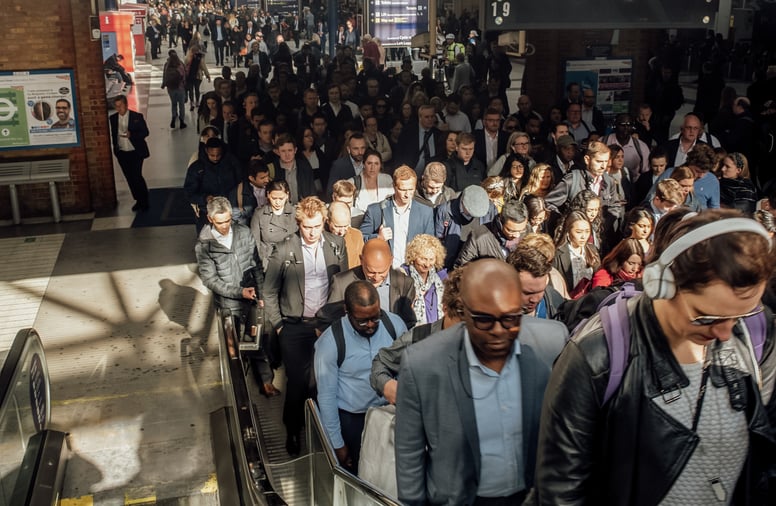Three years on from the first global lockdowns and the world’s biggest ever home working experiment, leaders are still facing existential questions. The gnashing of teeth has nearly all to do with the office: and where employees bring the most value to the business.
In the new world of work, some organisations still make the office the centre of their universe – often in exchange for sky-high employee wages. Others have done away with in-person setting completely, saving on rent and embracing digital-first ways of working.
Outside of the all-or-nothing approach sits hybrid. In knowledge work, it’s become the de facto working model of most businesses. And it’s this working pattern (3-2, 2-3, once a week or a quarterly approach) that still remains in flux. We’re now seeing the biggest conglomerates on the planet begin to pull back on hybrid, returning to full-time office schedules as the economic picture darkens and the tight labour market begins to loosen in favour of employers.
So much of this uncertainty is driving the continued disruption to workplaces: virtual working is better enabling side gigs and second jobs as recession bites; businesses pushing workers back to the office risk disengagement and ‘quiet quitting’ behaviours; agile startups are creating new roles of chief remote officers to navigate organisations through uncharted waters.
The world of work has changed for good. And its future is still being written. I recently discussed the world of work and its future with Julian Stubbs, Co-Founder and Chairman of UP THERE, EVERYWHERE, a global cloud-based agency that has been pioneering e-ployment for over 10 years.
The return of the return-to-office
The office is now a place for distraction. For many companies, in-person working is still essential; conversely, there’s an acceptance that the home is now a sanctuary for heads-down, focused work. So, many hybrid businesses now reserve three days a week for workplace conversation, collaboration and commotion.
Staccato days between the home and office doesn't suit everyone. It’s one of the factors that drove the Great Resignation, as workers gravitated towards the companies that offered remote or more flexible set-ups. Many companies also didn’t deliberately choose the back-and-forth model as the optimal approach to inspire value creation. Instead it became the difficult default option: workers didn’t want to go back to full-time office settings following the pandemic; bosses didn’t want to lose the physical workplace completely.
This uneasy compromise can still go either way. However, amid dour economic forecasts and layoffs, it appears employers will be more likely to slice a WFH day from the work week, rather than cut an office day. In some cases, the likes of Twitter and Disney have reneged on virtual working altogether.
Even companies that have ended office leases are still tussling with the legacy of 9-to-5 in-person working, from issues like location based pay to co-working days that naturally favour employees who live within commutable distances of major cities.
The shifting worker mindset
Enabled by tech, the side hustle has become the Holy Grail for workers. Virtual working is opening up multiple streams of income where employees are adopting the freelancer mindset and maximising revenue against their skill-sets: switching between projects is as easy as switching between tabs.
Effectively, heavy workloads and hustle culture has become something of desire in the world of work – so long as it’s in your own name rather than an employer’s. Stoked by fears of recession, workers are squeezing out every ounce of their workdays in order to maximise income. In extreme cases, employees are juggling two or three full-time remote jobs.
Quiet quitting may have been the workplace trend of 2022, but hustle culture is still pervasive – it just exists in a new form. Rather than the traditional 9-to-5 job, it’s reserved for individual work pursuits: from freelance gigs to second jobs and side businesses.
Embracing the future of work
The full-time office setting, for the vast majority of the workforce, has had its day. And even the idea of the full-time employee is being disrupted.
It’s the businesses best able to ride out the change that are best placed to reap the rewards. Often, these are startups that aren’t hamstrung by decades of old practices that are best able to lean into the disruption and embrace the future of work.
The most agile businesses are getting ahead, following nonlinear workdays that strip away mandated office hours, enabling workers to produce their best work according to their circadian rhythms and the natural ebb-and-flow of daily life. They’re employing asynchronous communication, optimising cross-border working, where the only geography that dictates how a business operates is the timezone, rather than a postcode. They curate co-working offsite experiences that incorporate the best social aspects of in-office gatherings, with a longer term focus on making virtual working work.
Finally, they embrace a philosophy: people have lives outside of their contracted hours, in which they can spend their time pursuing passion projects, reaching their career goals, or simply restoring their work-life balance.
